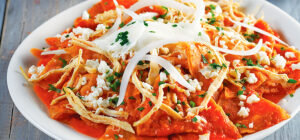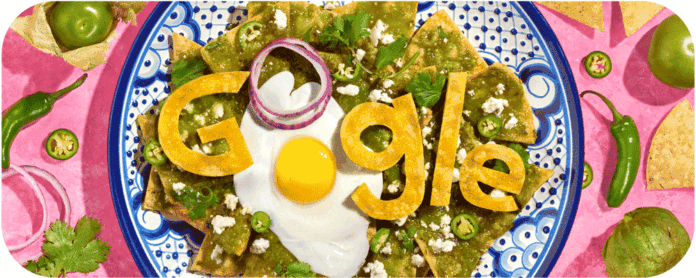Celebrating chilaquiles pronunciation helps us appreciate this delicious Mexican dish even more. The word “chilaquiles” is pronounced as “chee-lah-KEEL-ehs,” and knowing how to say it correctly is part of understanding its rich history and flavors. Many people around the world enjoy chilaquiles, but not everyone knows how to pronounce it properly.
Chilaquiles are a tasty Mexican meal made from leftover tortillas, salsa, and different toppings. People love it for breakfast or brunch because it’s both flavorful and comforting. While enjoying this dish, learning how to say “chilaquiles” the right way connects you to Mexican culture and cuisine. This makes the experience of eating chilaquiles even more special.
What Is Chilaquiles and Why Pronunciation Matters?
Chilaquiles is a popular Mexican dish made from crispy tortillas, salsa, and a variety of toppings. The name might be hard to say for some, but understanding it is important. Celebrating chilaquiles pronunciation helps food lovers connect with Mexican culture. It is pronounced as “chee-lah-KEEL-ehs,” and learning the correct way to say it makes the dish even more enjoyable.
Pronunciation is key because it shows respect for the origins of the dish. When we pronounce “chilaquiles” properly, we appreciate the tradition and history behind it. Knowing how to say the name right helps us feel closer to the rich heritage of Mexican food, which is famous for its vibrant and bold flavors.
The History Behind Chilaquiles Pronunciation
Chilaquiles has deep roots in Mexican history. The word comes from the Nahuatl language, spoken by the Aztecs. The dish has been around for centuries and was traditionally made from leftover tortillas. Celebrating chilaquiles pronunciation is part of recognizing this history. The dish is not only about taste but also about culture and language.
Over time, chilaquiles spread across Mexico, with each region adding its twist. As the dish became more popular, the pronunciation stayed the same, connecting modern diners with the ancient tradition. Understanding the pronunciation of “chilaquiles” helps people learn more about the origins of this flavorful meal.
Simple Tips to Master Chilaquiles Pronunciation
Many people find the pronunciation of “chilaquiles” tricky at first, but it’s easier than it seems. To pronounce it correctly, break it down into smaller parts: “chee-lah-KEEL-ehs.” Celebrating chilaquiles pronunciation is about practicing and getting familiar with the word. You can repeat it a few times to get comfortable with the sounds.
When learning how to pronounce chilaquiles, remember:
- “Chee” sounds like the first part of “cheese.”
- “Lah” is soft and easy, like “la” in “lava.”
- “Keel” sounds like the word “heel.”
- “Ehs” finishes off the word smoothly, like “s” in “yes.”
By following these steps, you can confidently say the name and enjoy the dish like a local.
The Importance of Pronunciation in Celebrating Mexican Cuisine
When celebrating Mexican cuisine, knowing how to say the names of dishes properly is important. Learning the pronunciation of traditional foods like chilaquiles shows that we care about the culture behind the meal. Each dish in Mexican cuisine has a story, and understanding its name is a step toward appreciating that story.
Chilaquiles is one example of how pronunciation connects us to history and flavor. When we say “chee-lah-KEEL-ehs” correctly, we are respecting the cultural roots of the dish. By celebrating chilaquiles pronunciation, we help keep these traditions alive and pass them on to new generations of food lovers.
Exploring the Tasty World of Chilaquiles
Chilaquiles isn’t just about how it’s pronounced. It’s a versatile dish that can be enjoyed in many different ways. Some people prefer it with green salsa (salsa verde), while others like it with red salsa (salsa roja). No matter how you like your chilaquiles, celebrating chilaquiles pronunciation makes the experience even more special.
You can customize your chilaquiles with toppings like:
- Queso fresco (a crumbly white cheese)
- Crema (a light sour cream)
- Fried eggs
- Avocado slices
- Shredded chicken or chorizo for extra flavor
By enjoying chilaquiles with these toppings and pronouncing its name correctly, you celebrate both the taste and the tradition of this beloved Mexican dish.
Celebrating Chilaquiles Pronunciation Through Food Experiences
Food is a universal language, and part of enjoying different cuisines is learning the words that go with them. Celebrating chilaquiles pronunciation goes hand in hand with tasting the dish. When you order chilaquiles at a Mexican restaurant or make it at home, saying its name properly enhances your experience.
If you’re hosting a Mexican-themed brunch or trying new recipes, start by practicing the name. Invite friends to join in the celebration by teaching them how to pronounce “chilaquiles” correctly. This adds a fun and cultural element to your meal and helps everyone appreciate the dish on a deeper level.
How to Make Chilaquiles Part of Your Kitchen
Chilaquiles is a dish that anyone can try making at home. It’s a simple recipe that turns leftover tortillas into a delicious meal. Celebrating chilaquiles pronunciation is part of the fun, as you enjoy saying the name while preparing the food. Here’s how to make your chilaquiles experience memorable:
- Gather tortillas, salsa, and your favorite toppings.
- Fry the tortilla pieces until crispy.
- Mix them with salsa verde or salsa roja.
- Add toppings like crema, cheese, or eggs.
Each bite of chilaquiles becomes more meaningful when you understand both the recipe and the cultural significance behind its name.
Conclusion:
In conclusion, celebrating chilaquiles pronunciation is about more than just saying the name right. It’s about appreciating the history, culture, and flavors of this beloved Mexican dish. Learning to pronounce “chee-lah-KEEL-ehs” connects us to Mexican culinary traditions and enriches our dining experience.
Whether you’re enjoying chilaquiles for breakfast or brunch, take the time to celebrate its pronunciation and the stories behind it. By doing so, you honor the heritage and continue the legacy of one of Mexico’s tastiest dishes.


